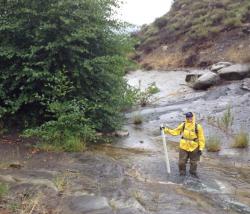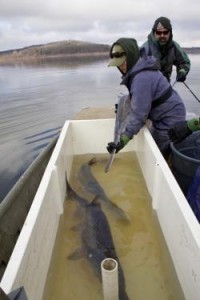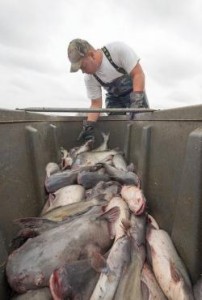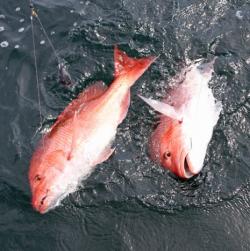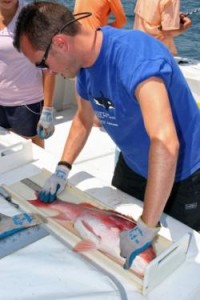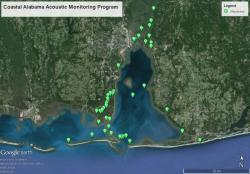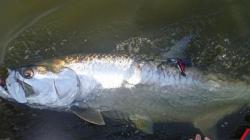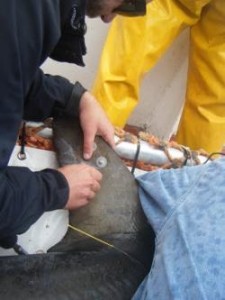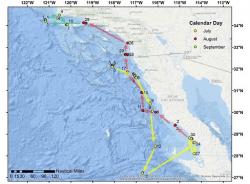A Lens on Nature: Four Ace Photographers and the Wildlife Refuges They Love
EDITOR’S NOTE: If you love wildlife photography, you’ll enjoy this story from the U.S. Department of Fish & Wildlife Services.
from The Fishing Wire
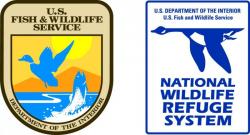
Logos
Wait! Think before you aim that camera at a national wildlife refuge. It may be habit-forming. That’s been true for four standout nature photographers – each hooked on prowling a favorite refuge in hopes of locking eyes with a bird or fox, capturing light and color, and probing the mystery of our animal natures.
All four photographers – April Allyson Abel at Prime Hook Refuge, Delaware; Quincey Banks at Eufala Refuge, Alabama; Marvin De Jong at Bosque del Apache Refuge, New Mexico; and Mia McPherson at Bear River Migratory Bird Refuge, Utah – say photo opportunities abound on refuges.
“Why are national wildlife refuges great places to take wildlife photos?” asks De Jong. “The obvious answer is because there’s wildlife there. There’s an emphasis on wildlife. But it’s more than that. You frequently have good access to animals and birds. You have a wildlife trail or a road. That’s the great thing about Bosque del Apache Refuge. You can stand on the road and have sandhill cranes being themselves just 15 yards away.”

Bosque del Apache National Wildlife Refuge in New Mexico.
Adds McPherson, “Wildlife refuges are just amazing. That’s where the habitat is. It’s refuges’ job to manage [them]…and they do an excellent job of it.”
National wildlife refuges, managed by the U.S. Fish and Wildlife Service, are part of Americas’ rich natural heritage. They have been so since 1903, when President Theodore Roosevelt established the first national wildlife refuge on Pelican Island, Florida.
National wildlife refuges offer chances to see an almost unparalleled array of wildlife, including many of the nation’s most beloved and spectacular species. Wildlife photography brings individuals and families close to nature, which research has shown to be physically and emotionally beneficial. Find a refuge near you: www.fws.gov/refuges.
April Allyson Abel
If you want to see the world through April Abel’s eyes, rise early. You want to beat the sun to Prime Hook National Wildlife Refuge on the Delaware coast so you’re in place when the light show begins. “There are two kinds of people in this world,” laughs Abel. “There’s the kind who say, ‘You’re gonna shoot at sunrise again?’ and the kind who say, ‘Can I come with you?'”
On a frosty March morning, she patrols the bank of a refuge impoundment in a thermal vest and jeans (no jacket, no gloves) and trains her lens on the herons and avocets feeding in the shallows. A heron snags an eel, shakes it, then downs it. “Got it,” says Abel, like a sportscaster offering color commentary on a play. “Now a little sip of water to finish it off.”
She keeps shooting as the sun rises through the clouds, turning the indigo sky to purple and orange. The refuge, she says, “is just so beautiful, and the still water makes a mirror for the birds.”
Abel took up digital photography at age 40 after a life change, spending a year documenting the seasons at Prime Hook marsh. She worked freelance as a writer and photographer. Her stories and photos appeared in local newspapers and magazines, and she began racking up photo prizes. Today, she works as exhibits coordinator for Delaware State Parks.
A favorite photo she took at Prime Hook shows a heron about to close its open bill on a tiny fish, for a moment suspended in mid-air. “I watched the heron fishing for about 10, 15 minutes. It caught one fish after another, tossing them back like a kid eating popcorn. I kept shooting frame after frame, and this one showed the fish perfectly balanced mid-air, about to be eaten.”
When it’s too cold in winter for even her to shoot, Abel knows what to do: “spend time learning about bird species and habitat. So you learn what to anticipate in the way of bird behavior and can get a better shot.”
Quincey Banks
Eighteen years ago, Quincey Banks was photographing his son in Eufala, Alabama, when the toddler balked. “He started saying ‘no’ when I was trying to take pictures of him running around the house. So the next best thing was to go take pictures of stuff I saw outside,” says Banks.
He began taking his camera when he went hunting. Then, to get close-ups of wood ducks, he built a floating blind of Styrofoam covered with brush. Launching it before dawn, he waited beneath it, wet and shivering with cold.
The discomfort paid off. “You go from spooking the birds to having them within 30 or 40 feet. And for a wildlife photographer, to get a wild animal such as a wood duck within 30 feet, that’s nirvana. I mean that’s just crazy. From that point on, I was hooked. … I didn’t care about anything except photographing those birds.”
For Bank, nature photography is about “being outside and seeing what God made. Every time I go out and do nature photography, there’s always something different to see.”
He likes Eufala National Wildlife Refuge for its wide range of habitats and species, from wading birds to bobcats. “The refuge has so many different land types within that 19,000-acre area that I can photograph almost any type of animal that I might see in Alabama.”
He tells beginning photographers: “Learn as much about the animal you’re trying to photograph as you possibly can. A good nature photographer is also a good naturalist. …If you know how the animal is gonna act, or where it’s gonna be, it’s easier to be prepared to get that photograph when it happens.”
Marvin De Jong
What does Marvin De Jong like most about wildlife photography?
“It’s satisfying. It’s challenging. Birds are especially challenging because they don’t just sit and look at you. It’s a lot more exciting than wedding photography.”
“My first priority is to get an animal in [a photo],” he says. “I like a photo to tell a story. It’s good if there’s some action. If I can get a green heron catching a minnow that tells you a little story about the bird. If I can get the bird singing with its mouth open, taking off, landing,” he says, that heightens a viewer’s interest.
De Jong turned to photography in retirement. He and his wife were already volunteering at wildlife refuges such as Santa Ana in Texas and Bosque del Apache in New Mexico. “I like the outdoors. I like birds. They sort of came together.”
Bosque del Apache National Wildlife Refuge is his favorite refuge for wildlife photography. “I like things to be in the air. Flying birds are better than birds standing out in the water. And New Mexico is a great place for some of best sunrises and sunsets I’ve ever seen. The cranes fly out in the morning and fly back in the evening, so that’s when you’re going to be out there.”
Quick thinking helped him snag a favorite refuge shot. He’d just stepped out of the car when suddenly “there was this bobcat. Unfortunately, the camera’s in the car. So I opened the car door and of course immediately you get the noise alerting you the keys are in the ignition…I grabbed the camera, and I had it on the bobcat, but he was going away, so I was gonna get a butt shot. And so I said, ‘Hey, cat.’ He turned and looked at me, and that’s when I got the shot.”
“You’ve got to get the eyes of the animal. If you don’t have the eyes, you don’t have a photo.”
Mia McPherson
Utah resident Mia McPherson took up bird and nature photography in 2004 to heal from a personal loss and illness. Snapping nature photos was a natural extension of activities she loved.
“I like to be out in nature, listen to the birds, be exposed to different types of habitats,” says McPherson. “It’s quiet. It’s peaceful. I just relax and enjoy myself.” She honed her skill enough that two of her photos were chosen for a National Geographic pocket guide to birds of North America.
Nature photography isn’t easy. “You have to have a lot of patience,” says McPherson. “You can sit for an hour or two waiting for a particular bird behavior. Thirty seconds one way or another could make the different between a good shot and a great shot. Dealing with the elements is an issue, too. In summer, it gets very hot and buggy. In the winter, it gets extremely cold. Making sure you don’t get stuck in a snowbank: that’s a challenge, too.”
Bear River Migratory Bird Refuge, an hour and a half from her home, is among her favorite places to shoot.
“They have a spectacular auto tour route where you can drive around water impoundment area and see all kinds of birds from short eared owls and northern harriers to waterfowl and shorebirds.
“In summer it’s inundated with nesting shorebirds. One of the most spectacular sights is watching American white pelicans feed. In winter, the calls of thousands and thousands of tundra swans echo all over the place. It’s a magical sound.”
A favorite shot of hers shows two western grebes skating across water at Bear River Refuge. “That’s called rushing and that’s their courtship display.” The birds go through a preliminary ritual “so you can say, okay, okay, there’s going to be a rush now. But it’s definitely a challenge to get the photo because this routine they go through doesn’t always end in rushing. So you have to wait and wait and wait. And hopefully they will rush, but they don’t always. A car might come by or a raptor fly over, and that ends it for them.”
Video: https://youtu.be/bcUaUfWAo78
A Lens on Nature: April Abel Photographs National Wildlife Refuges
Flickr album: https://www.flickr.com/photos/usfwshq/sets/72157656107514654
A Lens on Nature: Four ace photographers and the national wildlife refuges they love.
Tips on wildlife photography: http://www.fws.gov/refuges/photography/
The U.S. Fish and Wildlife Service works with others to conserve, protect and enhance fish, wildlife, plants and their habitats for the continuing benefit of the American people. For more information, visit www.fws.gov, or connect with us through any of these social media channels: Facebook, Twitter, YouTube and Flickr.



